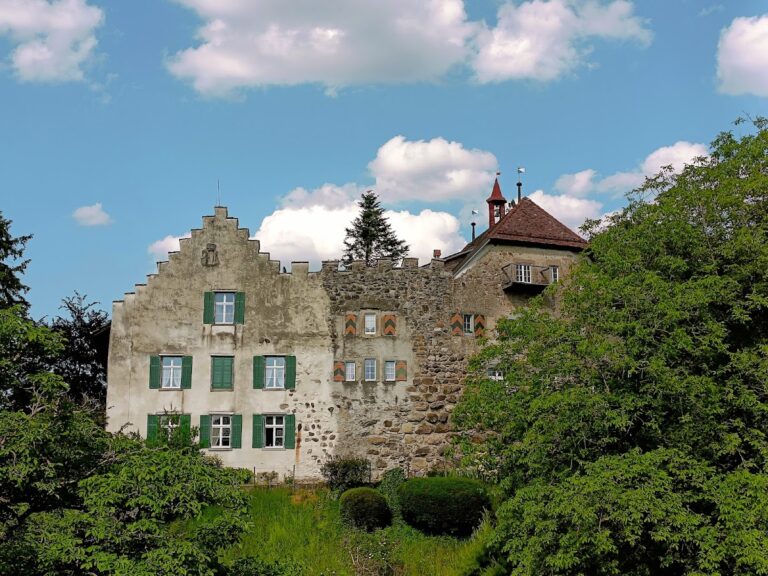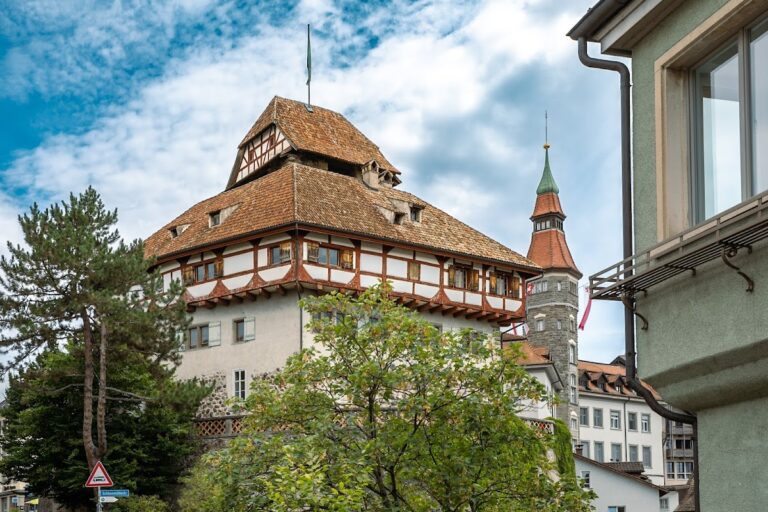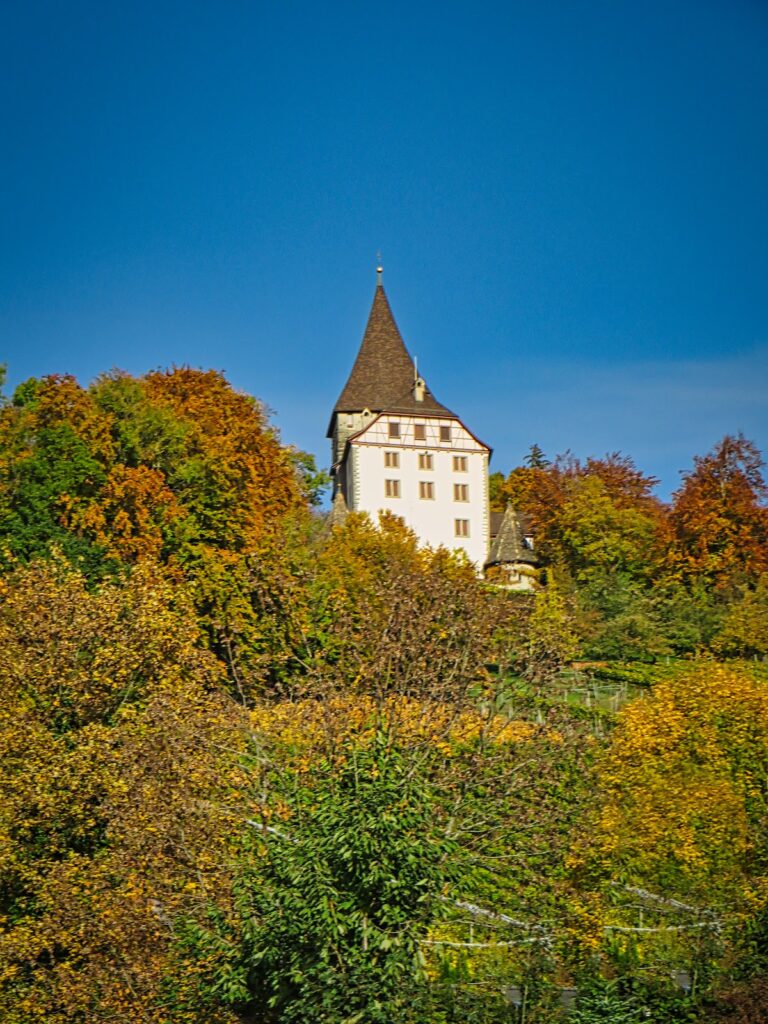Liebenfels Castle: A Medieval Fortress and Noble Residence in Switzerland
Visitor Information
Google Rating: 3
Popularity: Very Low
Google Maps: View on Google Maps
Official Website: www.schlossliebenfels.ch
Country: Switzerland
Civilization: Unclassified
Remains: Military
History
Liebenfels Castle is located in the municipality of Lanzenneunforn in Switzerland. It was originally constructed by members of the Liebenfels family, who first appear in documents dating back to 1254. This noble family served as ministeriales—unfree knights or officials—under the Bishops of Konstanz, holding both secular and religious positions. Some family members acted as canons in nearby ecclesiastical centers such as Zurzach and Embrach, reflecting their close ties to church authority during the medieval period.
The Liebenfels family retained ownership of the castle and surrounding lordship, which included territories such as Lanzenneunforn, Ammenhausen, and Wilen, until the late 14th century. In 1390, Rudolf von Liebenfels sold the estate to Hermann Grämlich of Konstanz, and just five years later, the property passed into the hands of Heinrich von Tettikofen. Around this time, the castle’s connections to high-ranking figures became evident. During the early 15th century Council of Constance (1414–1418), Barbara of Cilli, wife of Emperor Sigismund, stayed at the residence of the local noble Lanz-Liebenfels family in Konstanz, demonstrating the family’s prominence.
By the mid-15th century, Liebenfels Castle came under the influence of Hans Lanz, a prosperous merchant and diplomat linked to Emperor Frederick III and King Maximilian I through his service to Duke Sigismund of Austria-Tyrol. Around 1460, Hans Lanz acquired the castle by marrying Anna von Tettikofen, uniting two noble lines. Emperor Frederick III knighted Hans Lanz and granted the family the Liebenfels coat of arms, a heraldic symbol still present in the Konstanz cathedral today.
The castle experienced military action in 1475 when it was seized by Swiss mercenaries. Repairs followed to restore its defensive structures, particularly the main tower. Additional expansions and reconstructions took place after 1488, signaling renewed investment in the property. By the early 16th century, the lordship expanded further to include territories like Gündelhart.
In 1572, Heinrich and Jakob Lanz sold the castle and its associated lands, with the exception of Gündelhart, to Hans Christoph von Gemmingen. The Gemmingen family maintained residence at Liebenfels until 1654, when Johann von Gemmingen died without heirs. Subsequently, ownership passed to the Cistercian monastery of St. Urban near Lucerne until secularization policies in the mid-19th century dissolved monastic holdings.
Following these changes, Adolf Ludwig Follen, a German writer and academic who had emigrated to Switzerland, purchased the castle in 1848. He used it as a refuge for revolutionaries and hosted notable literary figures such as Hoffmann von Fallersleben and Gottfried Keller. Follen also attempted to establish silk cultivation (sericulture) on the grounds, but financial difficulties forced him to abandon the project and sell the estate in 1855.
After Follen, the castle passed through various private owners, including the industrialist Caspar Bebié from 1858 onward. It remained unoccupied from 1948 until 1992, when Klaus W. Ebert and Christiane Ebert-Schnaufer bought the property and undertook extensive restoration work. Upon Klaus Ebert senior’s death in 2009, the estate continued to be held by his heirs. Today, Liebenfels Castle is recognized as a cultural property of national importance within Switzerland.
Remains
The castle complex of Liebenfels spans an area of over 230,000 square meters, situated just southeast of Mammern near the road leading to the Lanzenneunforn district. Its layout centers on a bergfried, a tall defensive tower traditionally used in medieval castles for refuge and surveillance. This imposing structure remains the site’s dominant architectural feature and reflects the castle’s original military purpose.
To the north of the bergfried is a courtyard enclosed by residential buildings, designed to support the daily life and administration of the estate. Southward of the tower, the castle complex features extensions characterized by stepped gables, a distinctive roofline element dating to the 16th century. These additions reveal the castle’s evolution from purely defensive stronghold to a more comfortable noble residence.
Following the castle’s capture in 1475 by Swiss mercenaries, repairs were carried out on the bergfried and other key structures to restore strength and habitability. Further building projects commenced after 1488, contributing to the layered development of the site’s architecture. The stonework and construction techniques from this period illustrate the craftsmanship and resources invested in maintaining and expanding the castle.
One notable artifact connected to the castle’s heritage is the Liebenfels coat of arms, granted by Emperor Frederick III to Hans Lanz and his family. This heraldic emblem is preserved in the Konstanz Münster, providing a tangible link between Liebenfels and the broader imperial milieu.
Archaeological and archival records document vaulted systems beneath the front section of the castle, indicating the presence of cellars or storage spaces built with arched ceilings to support heavy structures above. Structural elements such as doors and windows on the tower’s northern façade have been recorded, offering insights into the defensive and residential functions of the bergfried. These features have been stabilized and restored, particularly during the comprehensive renovation led by the Ebert family after 1992, which markedly improved the castle’s condition following decades of vacancy.
Overall, Liebenfels Castle’s preserved remains convey a history of medieval fortification adapted over centuries into a noble residence, reflecting shifts in ownership, architectural style, and regional significance.







